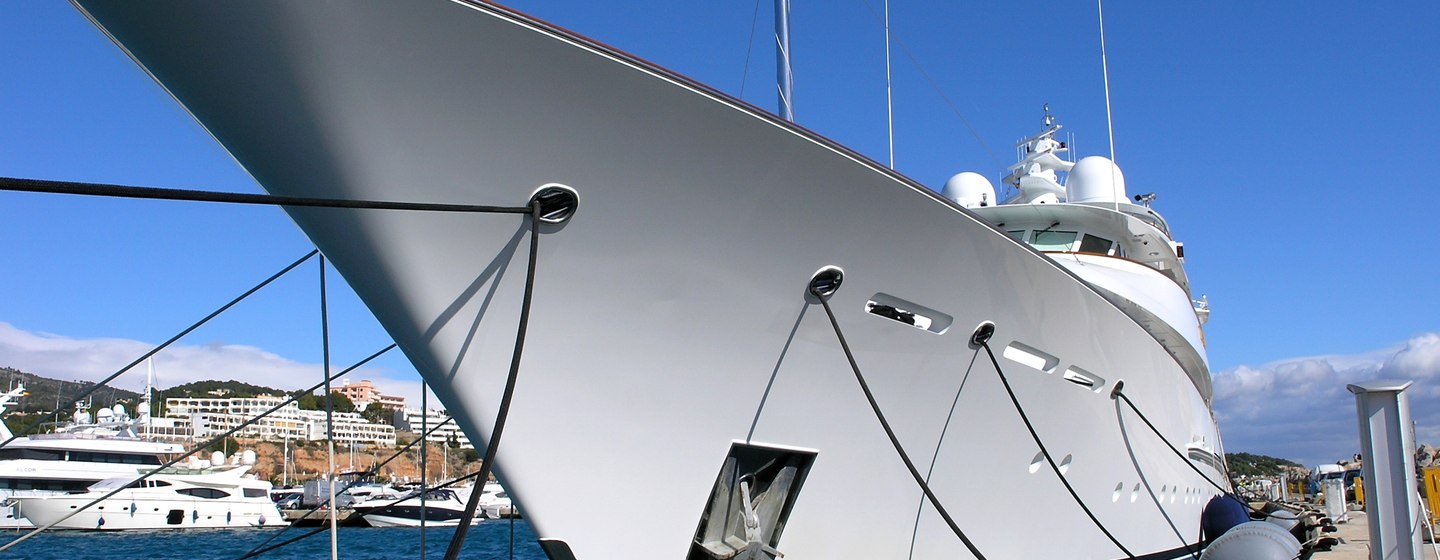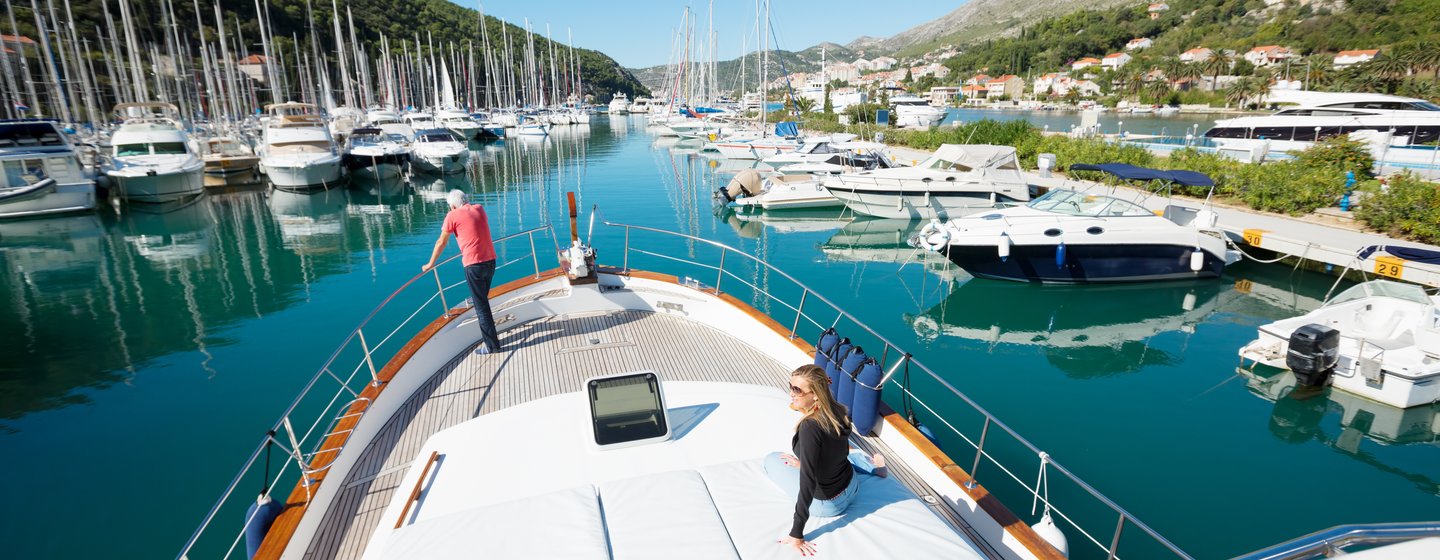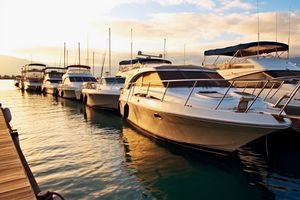With a keen eye on location-specific requirements and budget considerations, we take a look at the diverse mooring options for you and your yacht.
Personal Safety
First and foremost, let's prioritize personal safety. The image of anyone leaping off the boat with a mooring line clenched between their teeth is more of a nightmare than an act of bravado. Ideally, no one should jump from a yacht to the dock. Stepping onto the dock while securely holding onto a strong point of the boat, when the yacht is almost stationary, is the recommended approach.
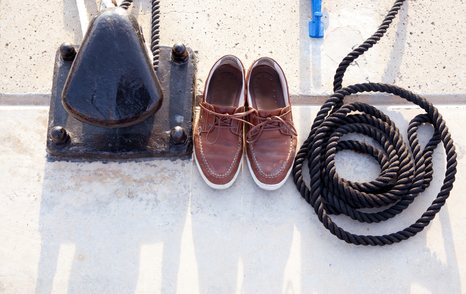

Personal safety: footwear
A dockside, even in the most upscale marina, can harbor numerous unsavory elements that you definitely don't want to encounter barefoot. Therefore, deck shoes are a necessity for any dock work. Although this may pose a challenge if the yacht enforces a no-shoe policy, finding a suitable solution is crucial.
Remember, prioritizing safety is of utmost importance; the consequences of bleeding feet on a teak deck far outweigh the slight imprint of a non-marking sole.
Get a turn on the line
Securing a multi-ton yacht with bare hands is a challenge even for the strongest deck crew. It is imperative to swiftly wrap the mooring line around a robust piece of dock furniture. Even a single turn around a cleat provides enough friction to prevent the yacht from drifting.
Gloves serve as ideal personal protective equipment, especially when handling lines regularly. They are particularly useful when picking up the lazy line (more details on this in the 'Med Style Mooring' section below).

We mentioned ‘dock furniture’ so let's take a look at what the options are for fastening a line, and ideally the best way to secure the yacht to the dockside.
Dock Furniture
Bitts - sturdy fixtures found on larger yachts and docks, serve as mooring points for securing lines under heavy load. A figure of eight and round turns on and around the bitts will hold a load securely, without slipping.
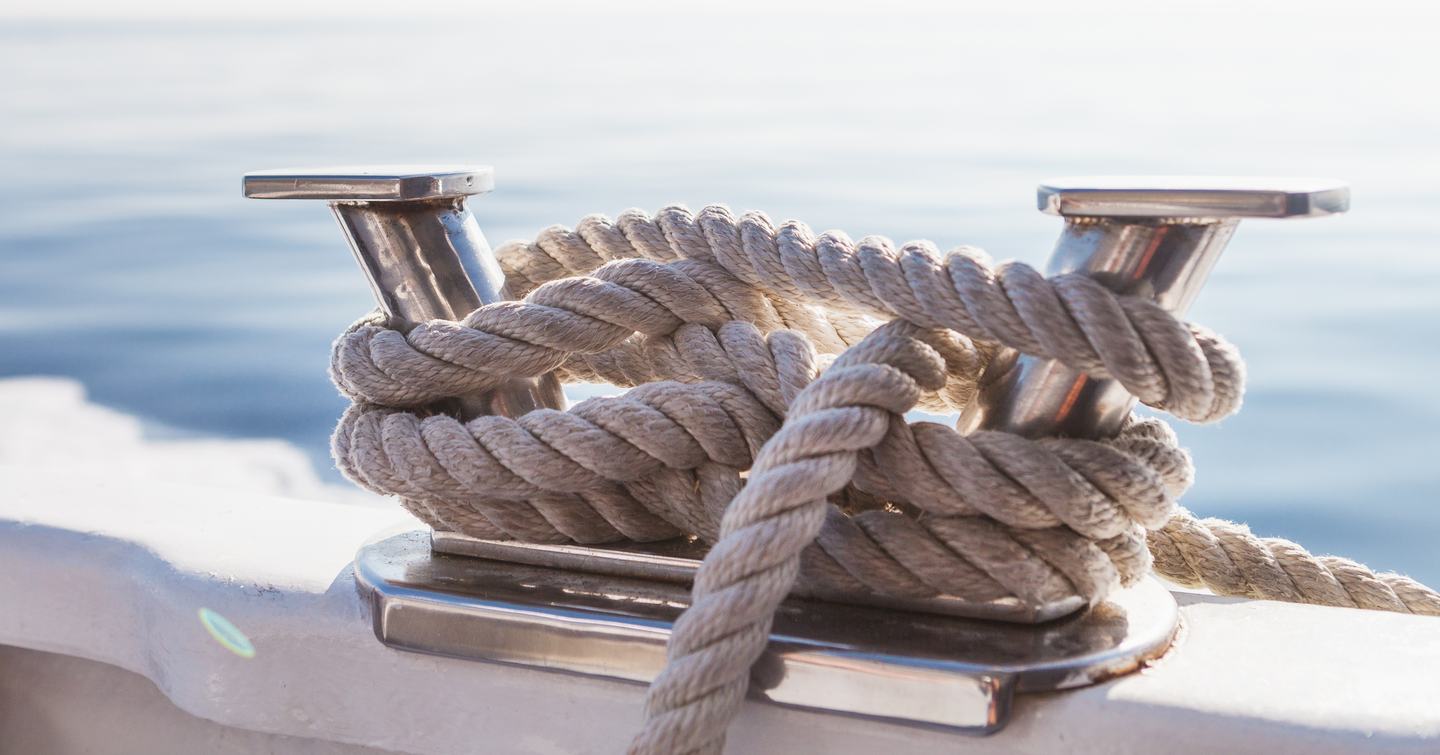
Bollards, available in various shapes and sizes, serve as strong fixed points for mooring. When selecting how to attach, it's crucial to consider the bollard's design and the line of load to the yacht to prevent it from slipping over the top. If there is a cross-tee in place, ensure that your line is positioned below it to prevent slippage.
Cleats, mooring strong points with two ends from a central fixing, offer versatility. They can be secured using the figure-of-eight approach, or a bowline or mooring loop can be dropped around the entire cleat. For enhanced security, although sacrificing some flexibility in urgency, tie the bowline through the inside of the cleat.
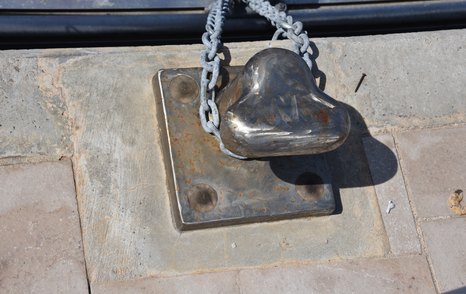
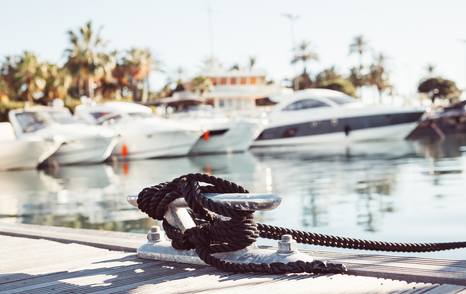
When securing a mooring line to a mooring ring, it's advisable to use only a 'round turn and two half hitches' knot to prevent the line from getting stuck during departure. As rings lie flat against the dockside, they may cause slightly more wear and tear on your mooring line.
While discussing dock furniture, it's crucial to avoid attaching a mooring line to the shore power unit. Berths are typically arranged to facilitate easy access for yachts to run their shore power cable to the unit, providing a reliable 24v supply to the yacht. A line should never be attached to a shore power unit.
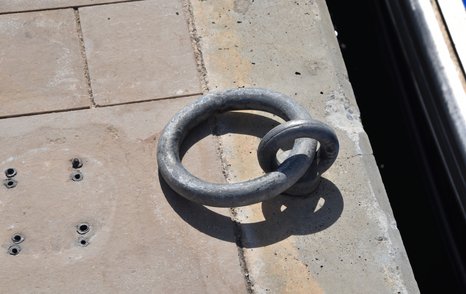
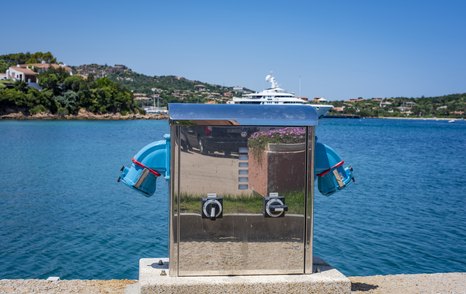
Marina Mooring
Marinas are strategically situated in sheltered locations and offer facilities catering to a diverse range of yachts. When it comes to mooring, options include securing a long-term lease on a berth, opting for a seasonal rental, or enjoying an occasional overnight stay.
Based on the marina's layout, yachts are assigned berths according to their size, adopting either a bow-in, stern-to, or alongside mooring configuration.
In the case of a bow-in mooring configuration, guests would disembark from the yacht over the bow, which can be both awkward and significantly unsafe in many situations. This approach is rare and is typically utilized when marina staff are efficiently packing in boats before an impending storm.
(If a yacht owner is planning on leaving their yacht for a while unattended, the bow-in mooring can serve as a deterrent against theft, making it less accessible for an easy getaway).

In the case of a stern-to-mooring, the yacht is maneuvered in reverse toward the dockside, with a line lifted from the seabed and attached to a block ahead of where the bow will eventually rest. This Med-style mooring will be thoroughly explored in the following section. Guests typically board using a passarell gangway-style walkway.
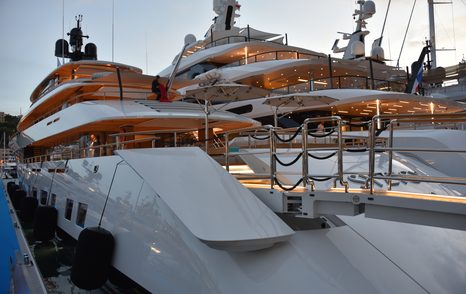

The alongside-to-mooring is often preferred as it facilitates convenient access for guests embarking and disembarking. This configuration allows the yacht to be secured with multiple mooring lines, both at the bow and stern, as well as 'springs' that prevent the yacht from moving forward and backward.
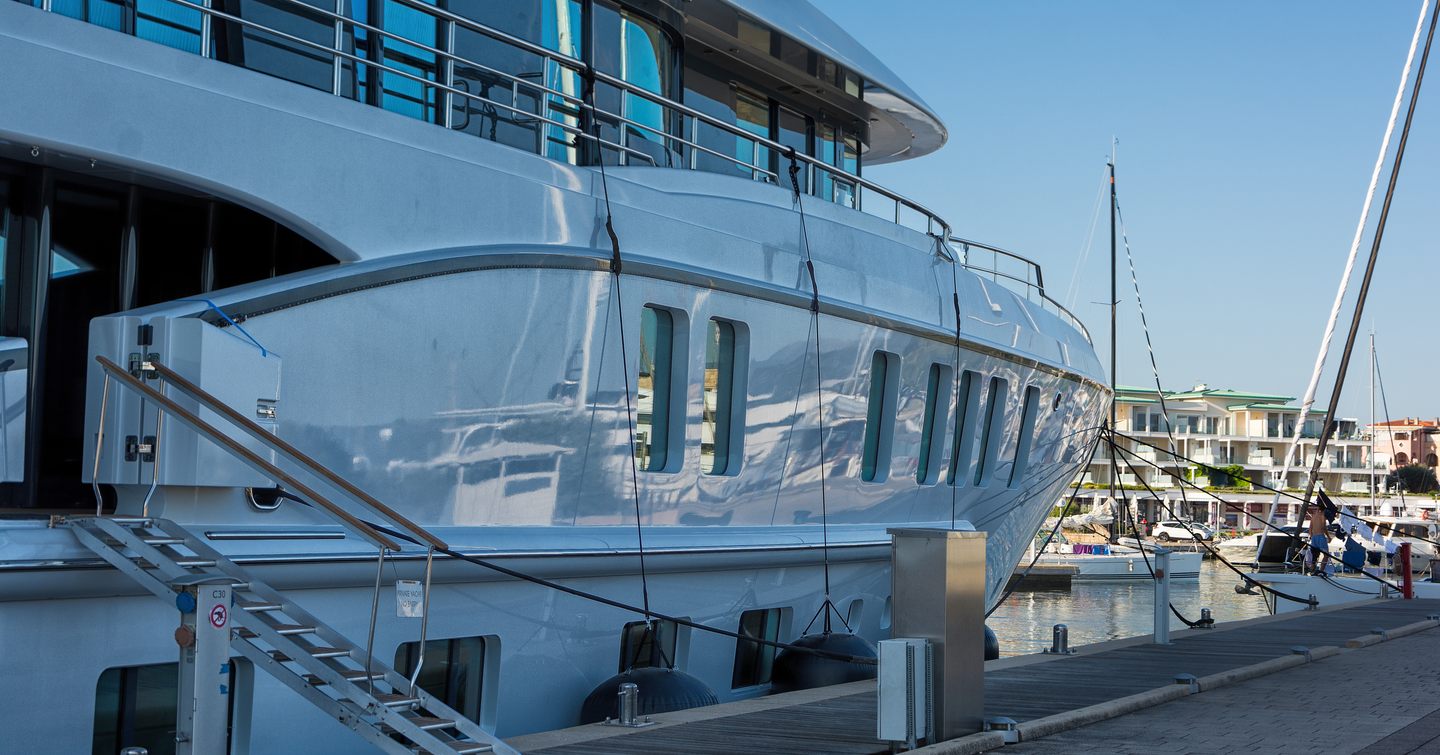
Med-Style Mooring
The Med-style mooring technique is popular in areas that are non-tidal and provides room for many yachts to reverse up to a fixed dockside.
The anchor-down approach is when the yacht positions itself forward of the berth it intends to take, and drops the anchor. The anchor chain is laid out as the yacht reverses. As the yacht gets closer to the dock, the anchor chain needs to be snubbed to ensure it’s caught on the seabed securely, if yes, the yacht can slowly reverse further paying out a little more anchor chain until the yacht is within easy reach of the dockside. The anchor will then be secured off the anchor windlass to prevent strain and two stern lines secured to the dock.
If the marina provides a fixed block for attachment, you'll find that gloves come in really useful.
Visualize a substantial, heavy block securely fastened to the seabed, positioned forward of where the yacht's bow will eventually rest when secured. This big block will have a strong mooring line attached to it, which will eventually be secured to your bow's deck fastenings. However, since the mooring line remains at the bottom of the seabed until it's attached to your yacht, a thin line is necessary to pass it to the person on the yacht who will walk forward, pulling the heavy line along with the lazy line.

Considering the potential contents of marina water, including sharp sand and barnacles, gloves become an essential component of your personal kit, guarding against potential cuts that could lead to unpleasant infections.
Tidal Marinas
In tidal marinas, the arrangement of yachts is determined by the tidal stream, with berths allocated according to the flow of the tide upon arrival. The tidal stream can significantly aid in the maneuverability of yachts.
A popular feature in tidal marinas is the finger pontoon, essentially a miniature pontoon dividing a series of bays accommodating two yachts each. This configuration allows each yacht to be secured not only stern-to but also alongside the finger pontoon.
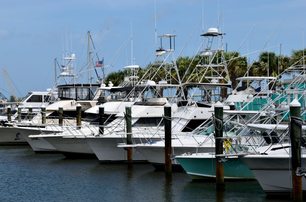
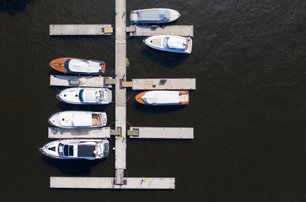

Given the tidal fluctuations, the concept of a fixed dock would be impractical, as the pontoon must rise and fall with the tide. A floating pontoon is typically fastened around fixed mooring posts, enabling it to slide up and down with the changing tide. A ladder or entrance walkway operates on a sliding mechanism, adjusting its angle to align with the tide. This dynamic can lead to the experience of ascending a steep walkway to breakfast, only to find it almost flat upon your return with shopping.
Rafting Up
To raft up is to effectively use another yacht as a mooring point. This can be seen in a busy marina in the height of the season, or even in a safe anchorage, where boat pals can moor up and share an afternoon picnic. While it's not recommended for extended stays, it serves as an ideal option for a brief lunch or quick break.
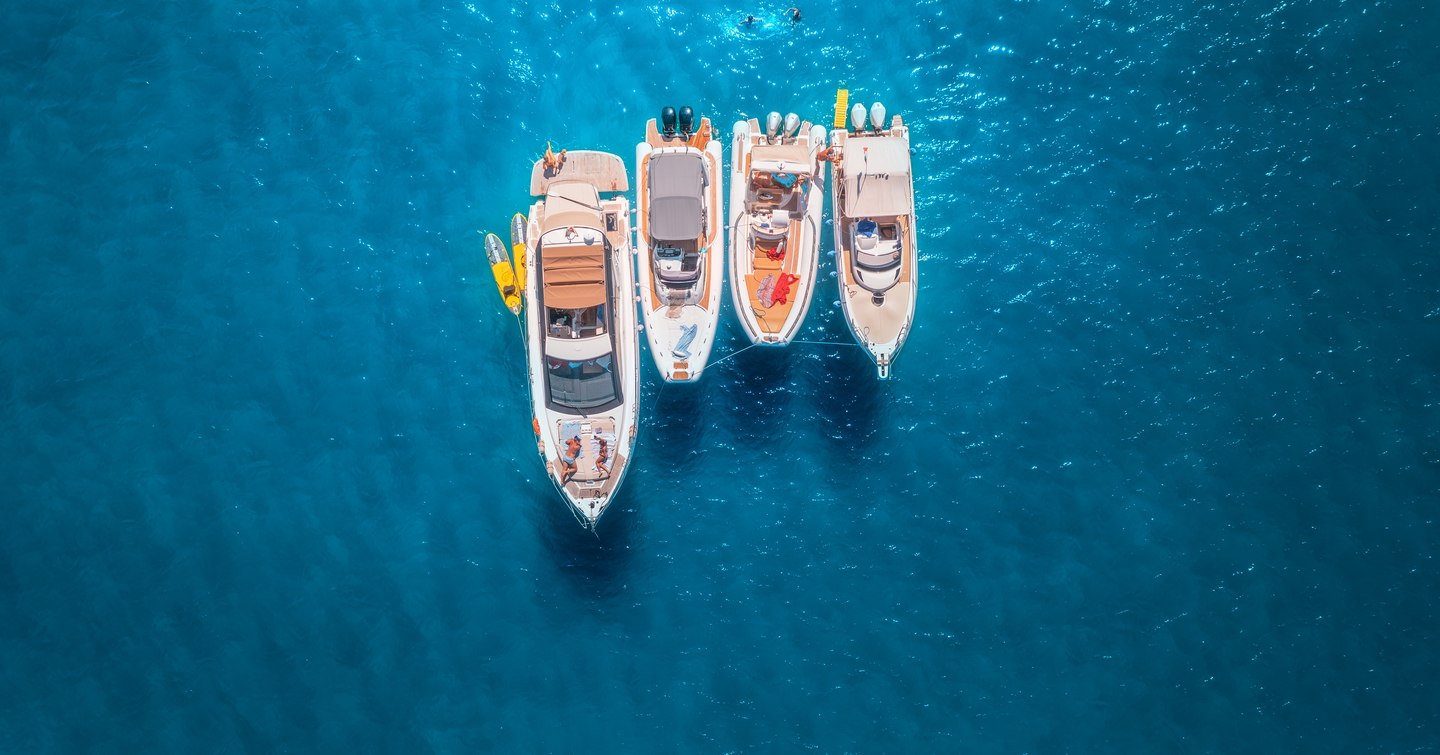
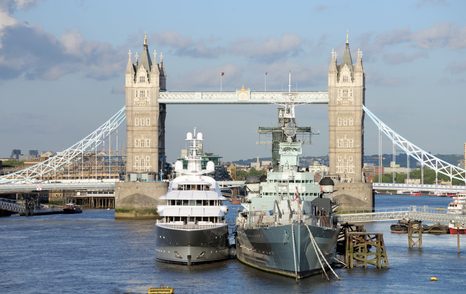

When within a marina, it's considered boating etiquette to inquire about neighboring yacht's departure plans and adjust your lines accordingly. For instance, if they mention a departure time of 0500hrs, you'll need to secure a line onto the adjacent dock, ensuring it doesn't obstruct their departure route, allowing them to slip away in the early hours. Being present on deck to assist with their departure and to secure your line to the dock is essential.
A word of caution: some individuals may claim an early departure to dissuade others from rafting up next to them. Responding with a friendly smile and a casual remark such as 'No worries, I'll be up to watch the sunrise, so I'll see you then' often prompts them to reconsider their statement.
Swinging
Outside of marinas, alternative mooring options include buoy or swing moorings and permanent anchorages.
A reliable mooring option involves securing your yacht to a fixed object on the seabed capable of withstanding adverse weather conditions. This could be a concrete block with a chain and mooring line or a set of anchors arranged in a compass points design to ensure a secure anchor is positioned windward of the vessel for every wind direction.
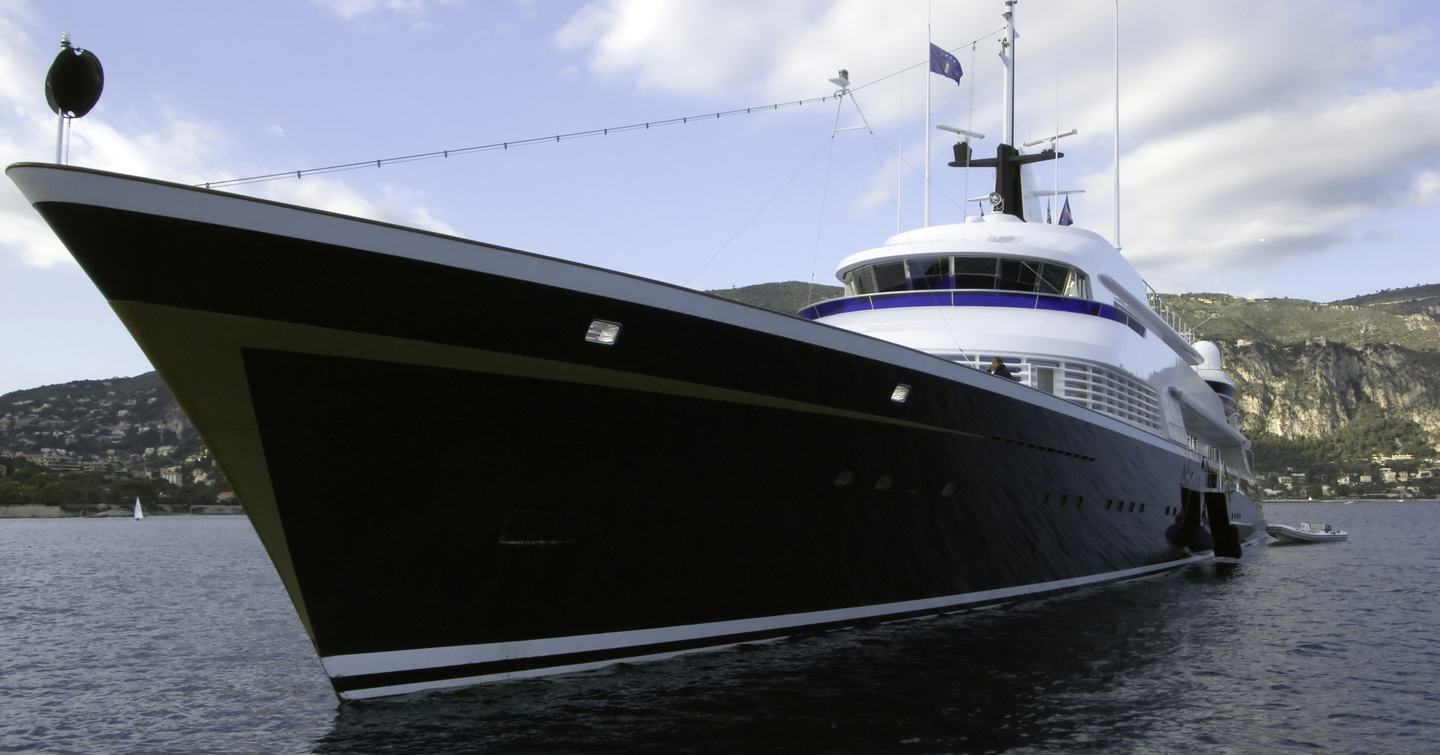
However, it's important to remember that these mooring options are never entirely foolproof. Many nights may be spent anxiously on deck during a storm. Therefore, if severe weather is forecasted, it's advisable to consider booking a marina berth for a night or two.
Piles
Pile moorings are fun: a captivating experience, involving the skillful maneuvering of your yacht between two fixed posts at an angle. This precise positioning ensures that the crew can secure a stern line through a mooring ring on the first post, paying it out sufficiently for the bow crew to secure it to the post ahead. The use of two secure and fixed points, with lines fastened from the bow to one post and from the stern to the other, guarantees a stable and well-mounted setup.
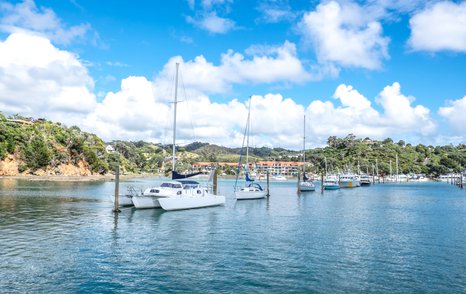
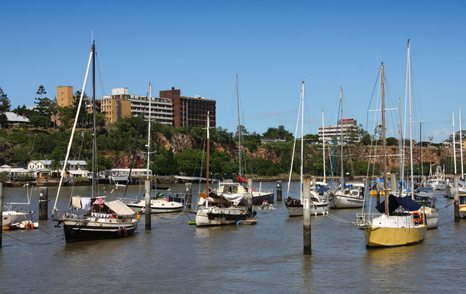
Piles are mounted in locations where crosswinds are unlikely.
As with all moorings that are away from land, you’ll be using your tender, personal watercraft or armbands to reach the shore.
Stacked
Stacked or dry berths have gained popularity in the USA. This innovative system involves the use of a sophisticated crane mechanism that lifts small boats into the water as needed and safely stores them on shelves when not in use.
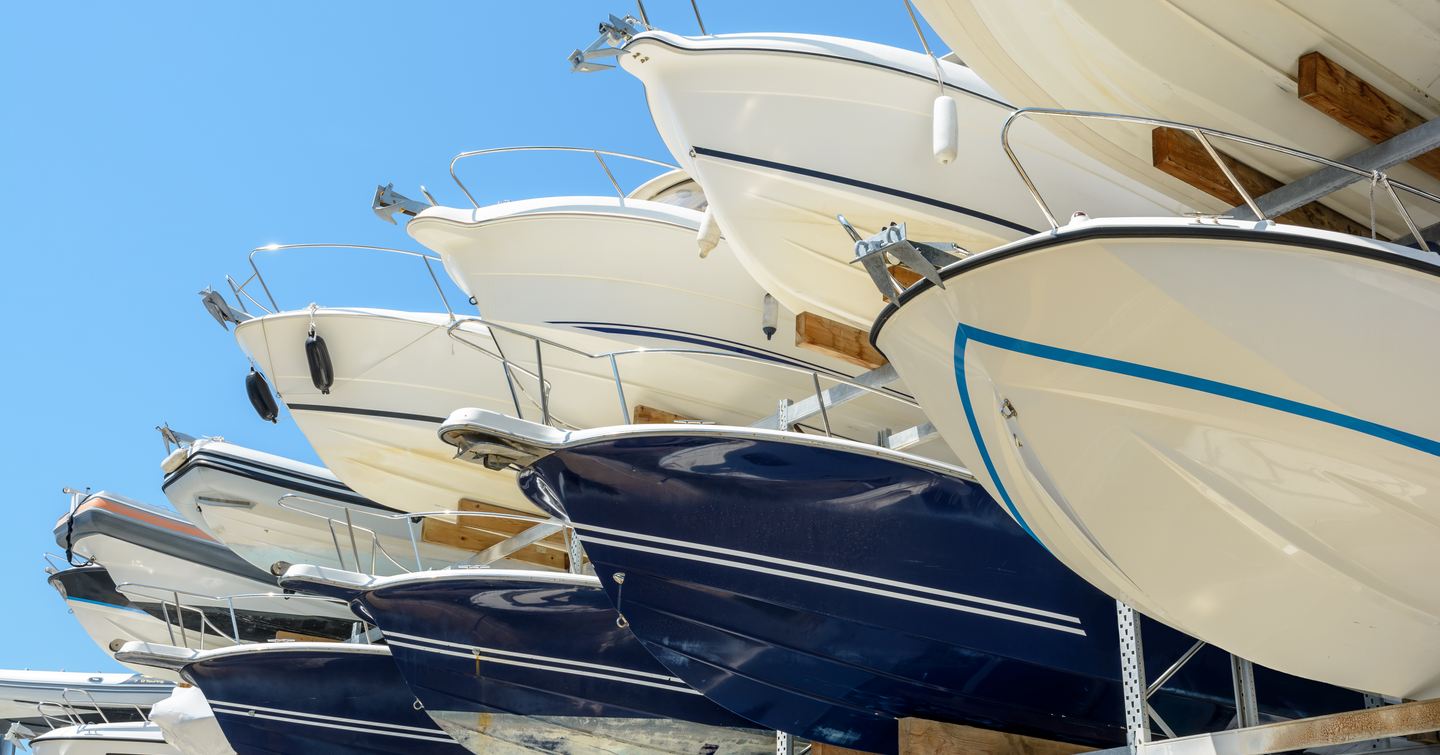
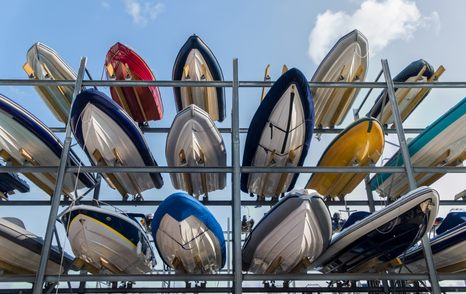
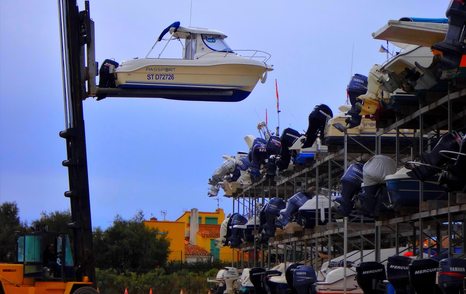
Fenders and Lines
Fenders protect your yacht from potential damage caused by contact with other vessels or objects.
Proper placement is essential to ensure effective protection. For instance, if your yacht might come into contact with another yacht, consider hanging the fenders at the widest point of the side deck.
Alternatively, if your yacht is docked alongside a finger pontoon, ensure the fenders are positioned just above the waterline.
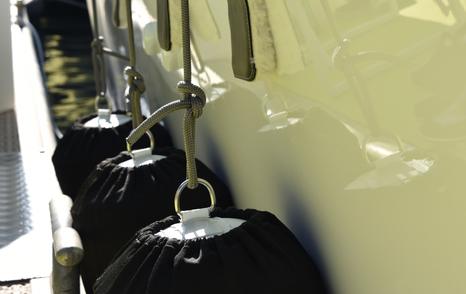
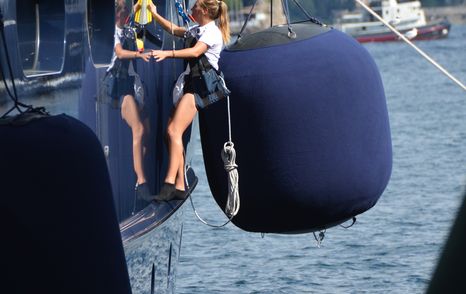
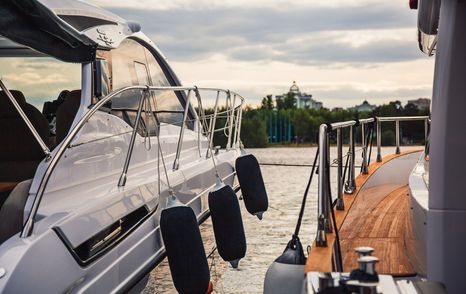
On a boat, we recognize that what is commonly known as "rope" in general terms has specific nautical designations depending on its purpose. When used for mooring, the rope is referred to as a warp or line, so a mooring line or mooring warp. (Historically, they were sometimes called hawsers, but the current practice has evolved beyond this terminology.)
Wherever possible and when space allows, assigning one line to one purpose is beneficial practice. For instance, a bow line serves the specific function of securing a strong point from the yacht to a strong point on the dock, without being doubled back to create the bow spring.
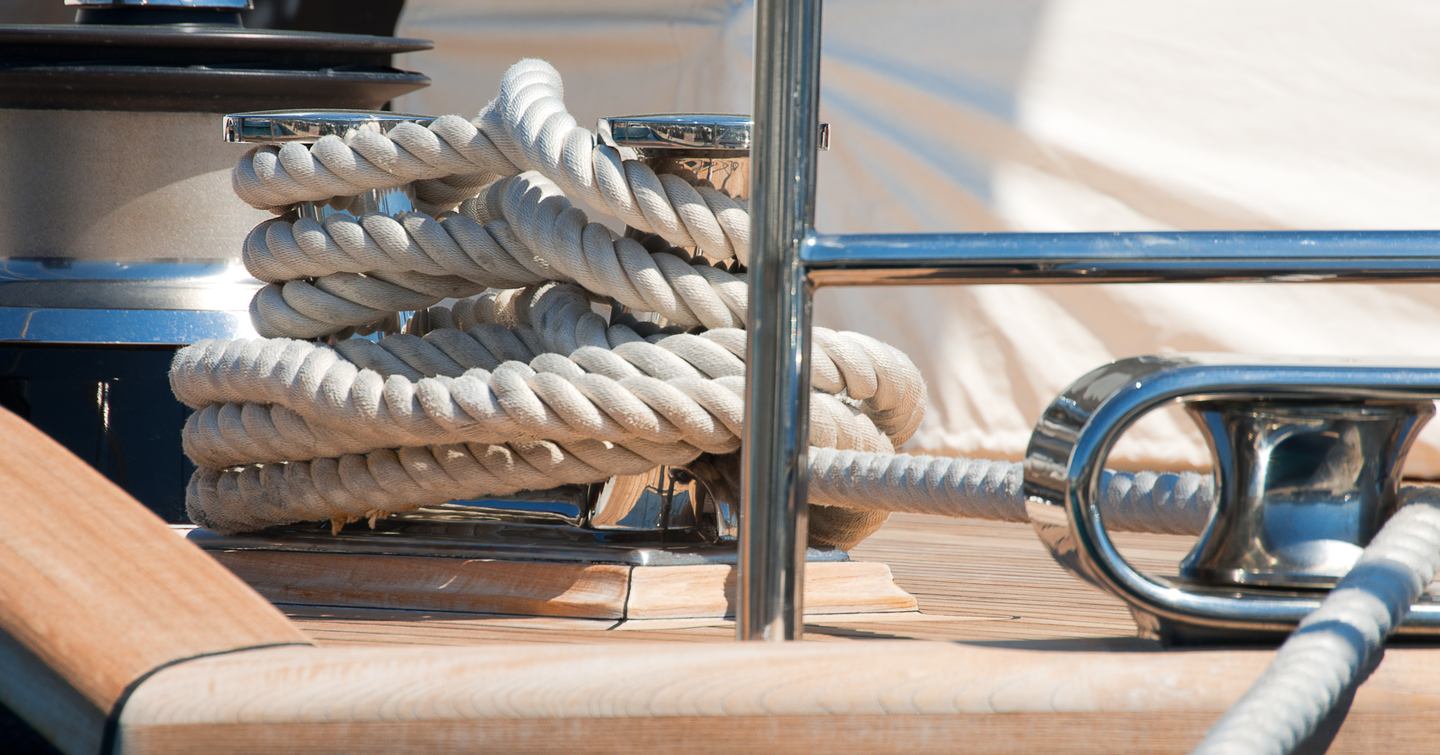
Running the lines through a fairlead is a recommended practice. Fairleads are positioned strategically near deck furniture to facilitate the smooth passage of a line outside of the yacht to the dock. This arrangement helps prevent unnecessary wear and tear on the lines.
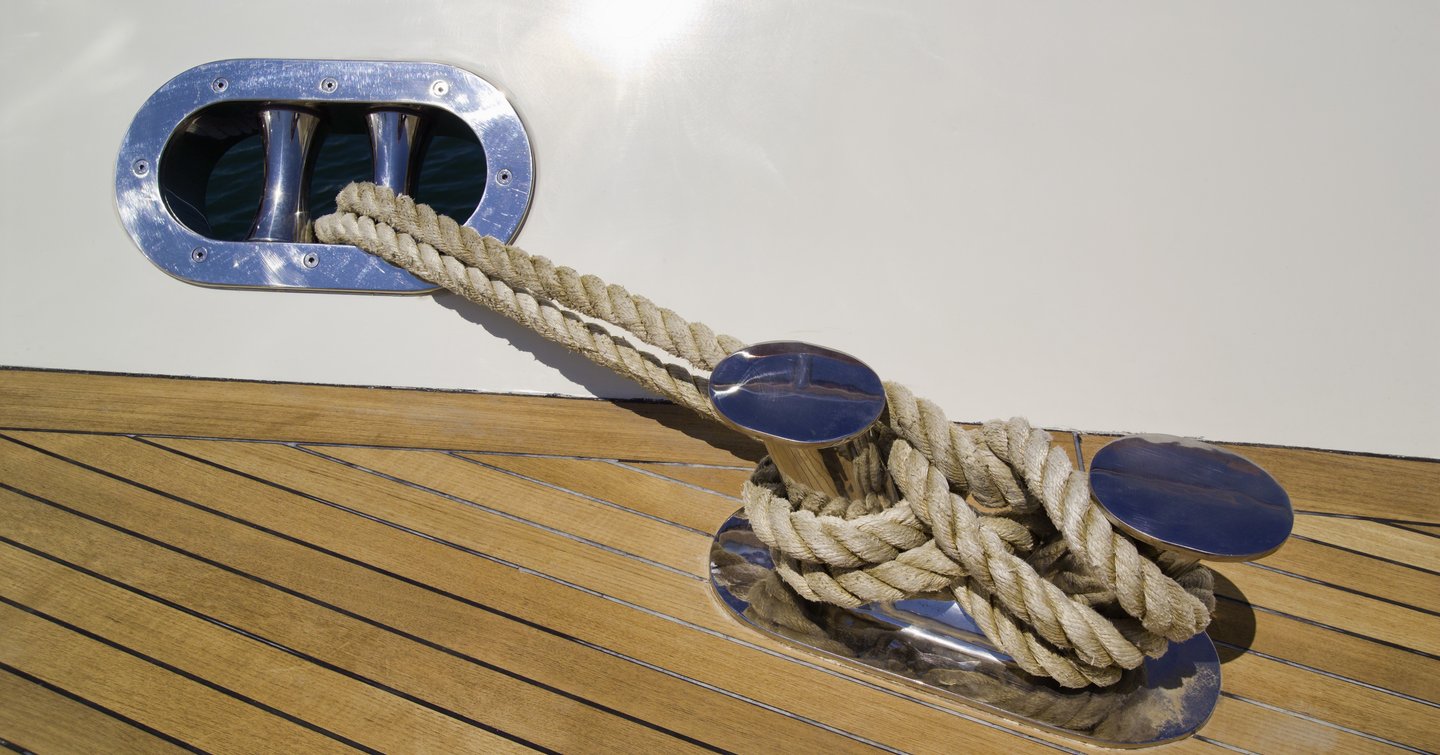
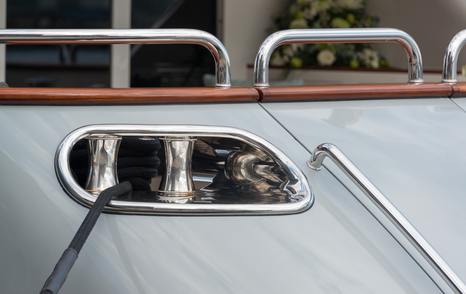
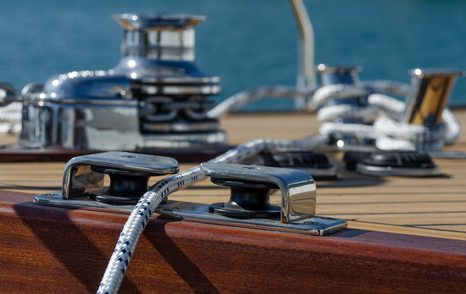
It's important to allow the yacht some flexibility, akin to letting it "breathe," when it's secured to land. Tying the lines too tightly can constrain the natural movement of the water, potentially causing the lines to snap under the pressure.
Springs or rubber buffers as seen below are often attached to mooring warps to provide flexibility and allow for movement, particularly when storms are forecast.
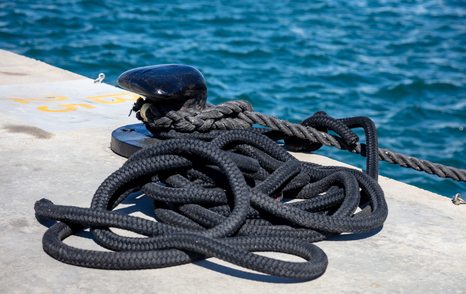
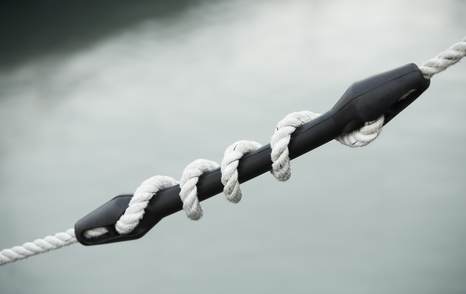
The mooring line should be neatly stowed on the deck, avoiding any haphazard placement on the dockside.

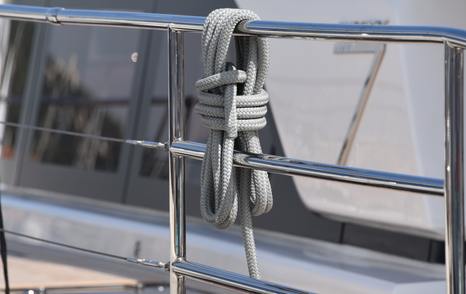
General Tips
- Always secure the windward line first.
- Always release the windward line last.
- Always wear shoes, ideally wear gloves.
- Know your knot etiquette.
- All lines should be back onboard and neatly stowed.
